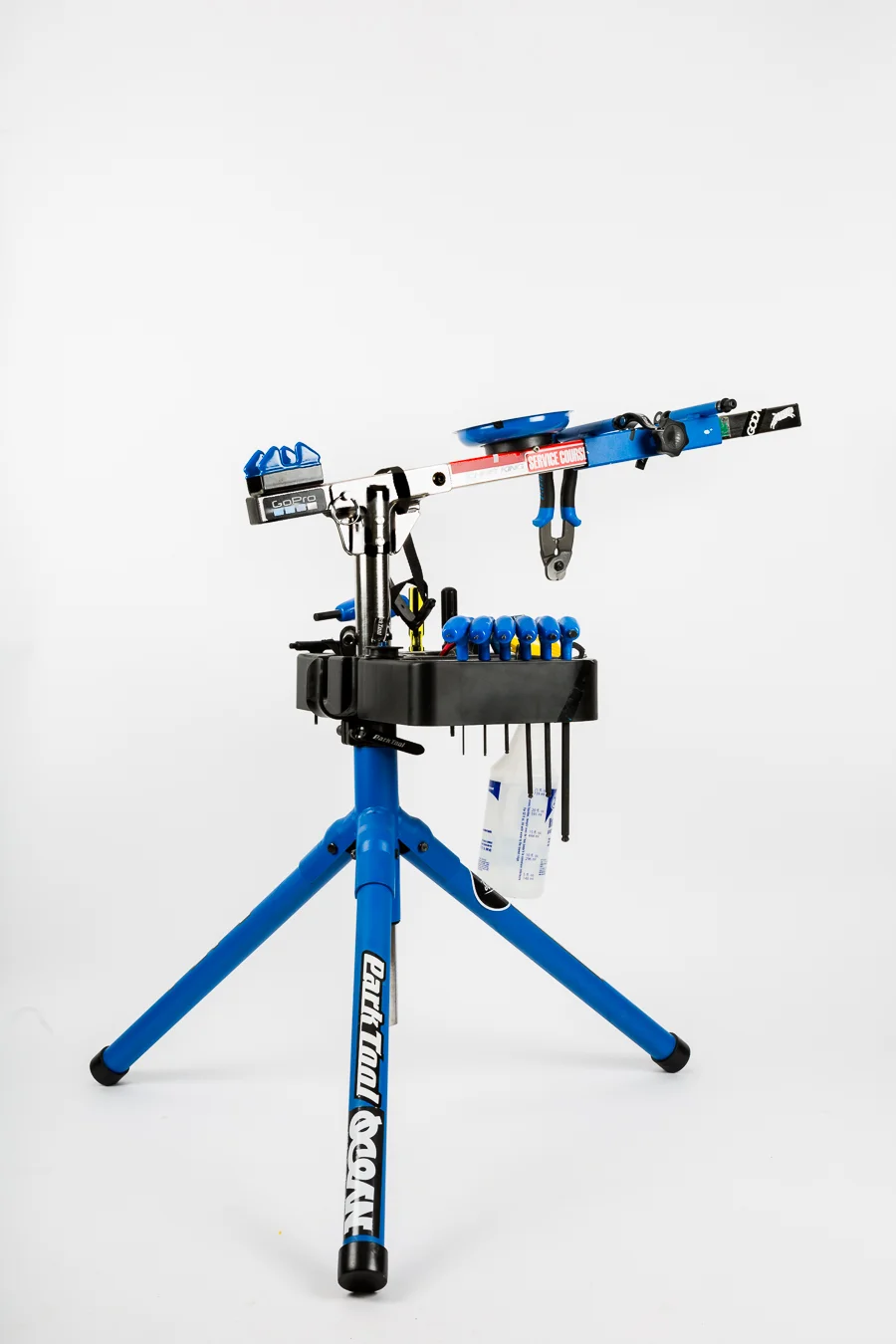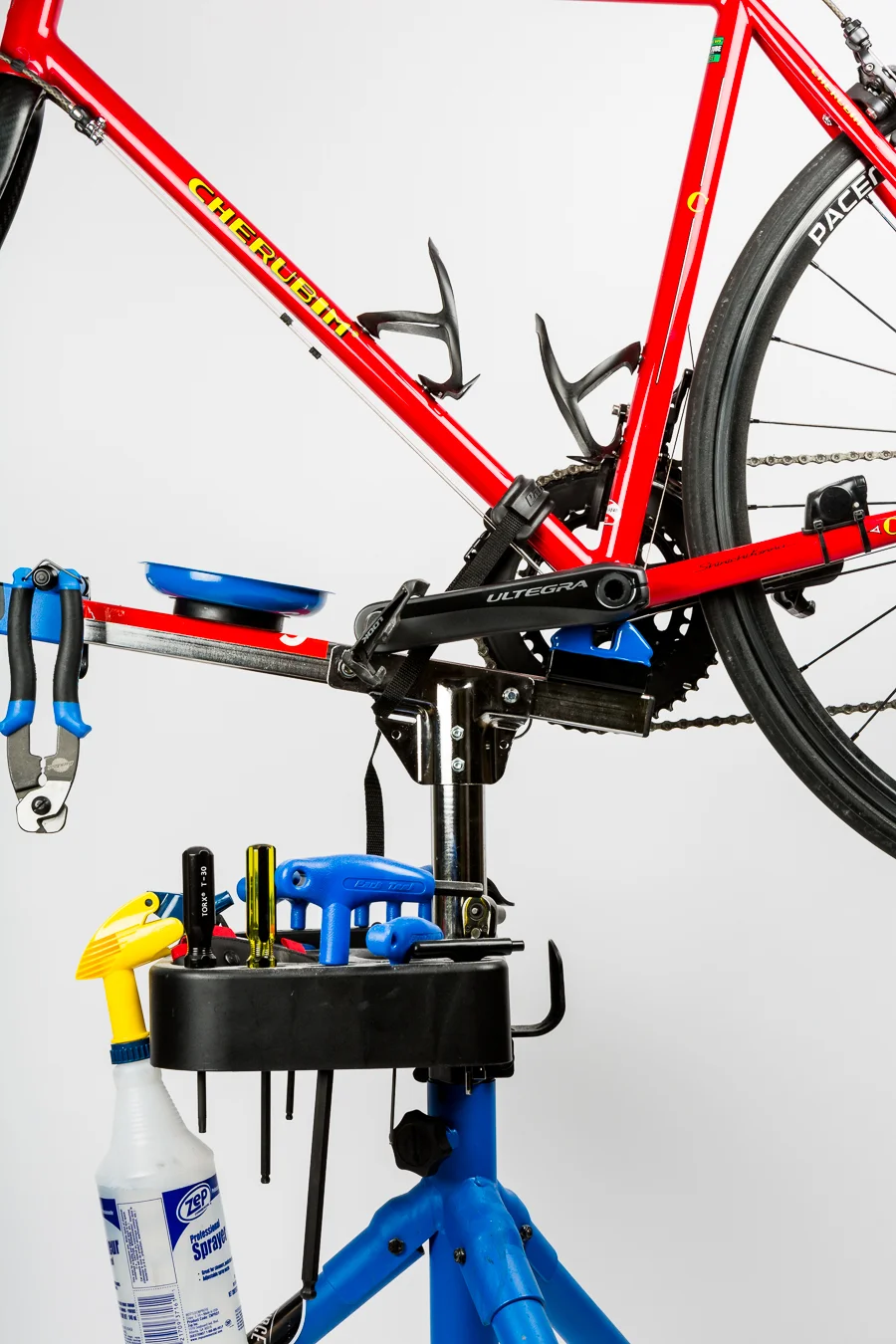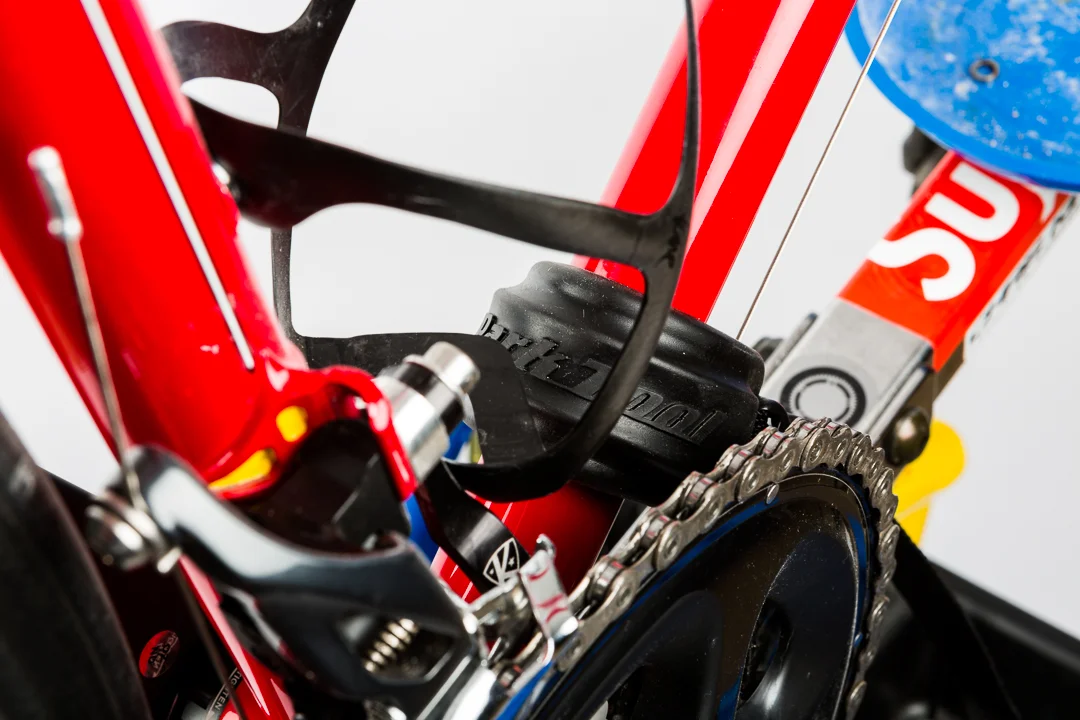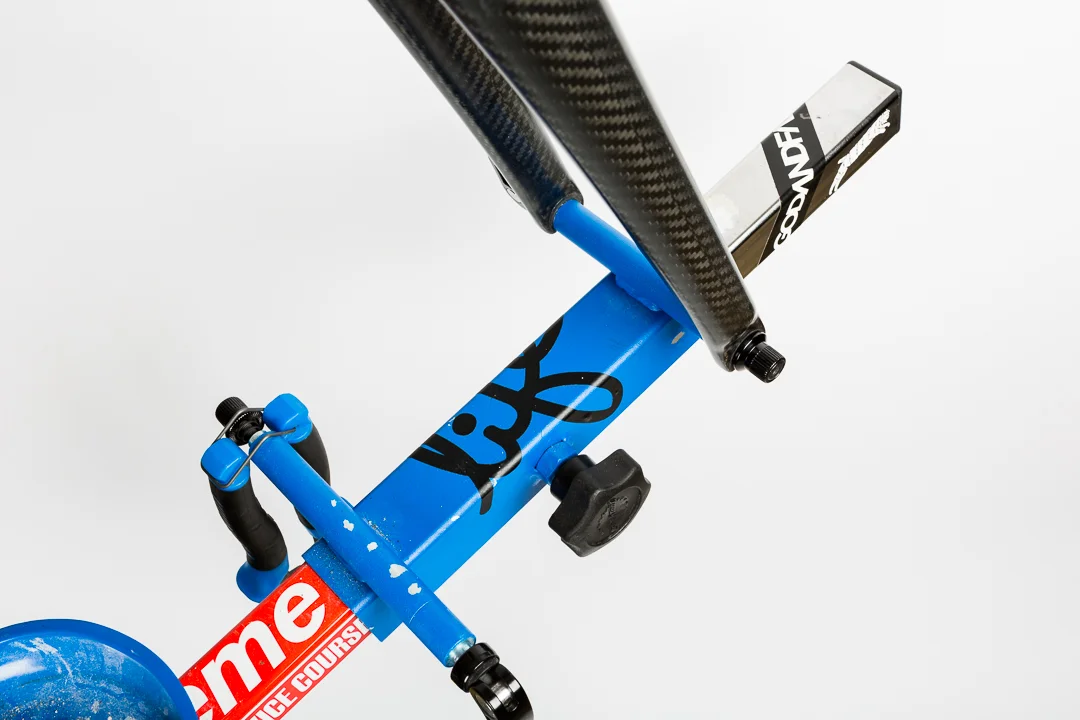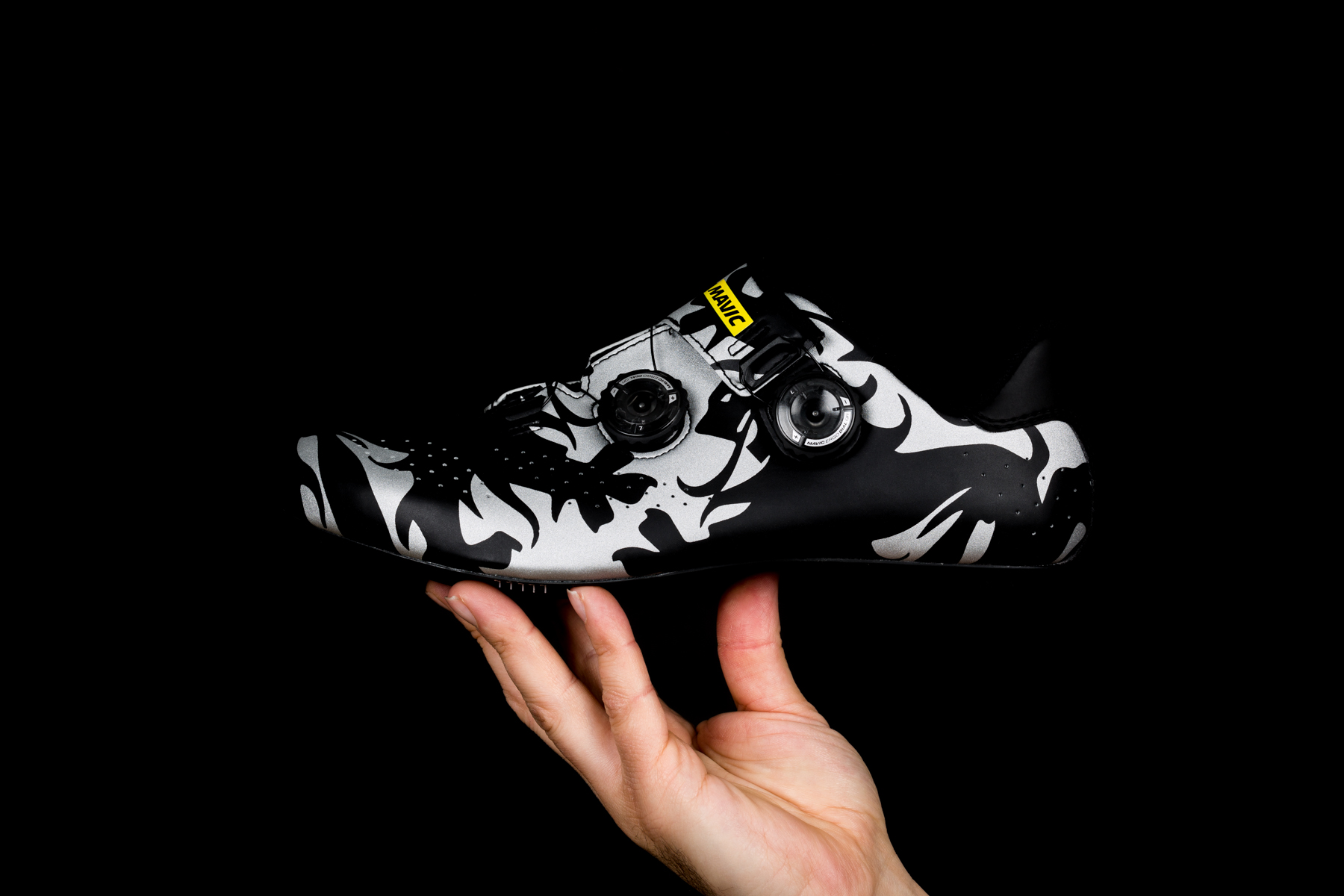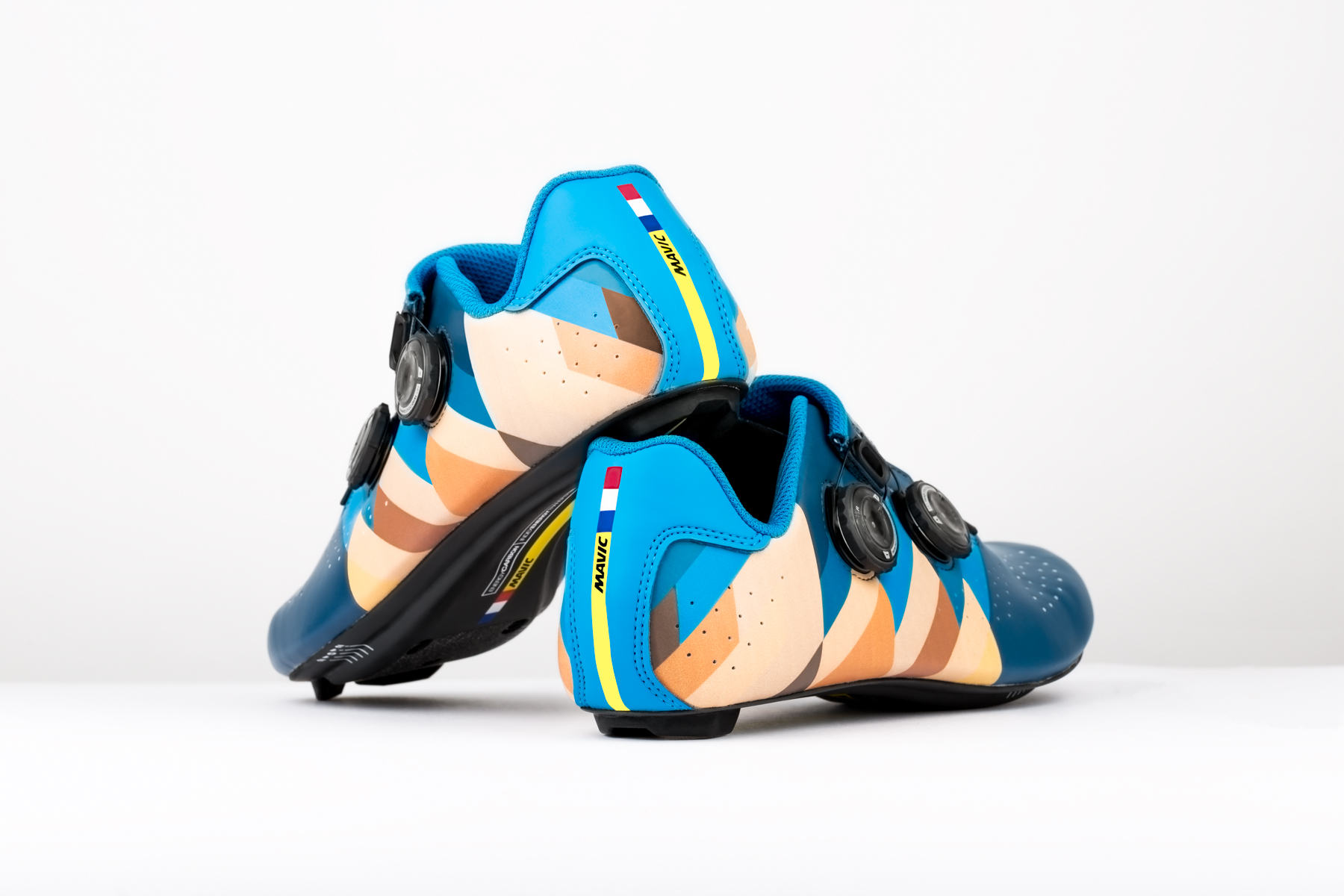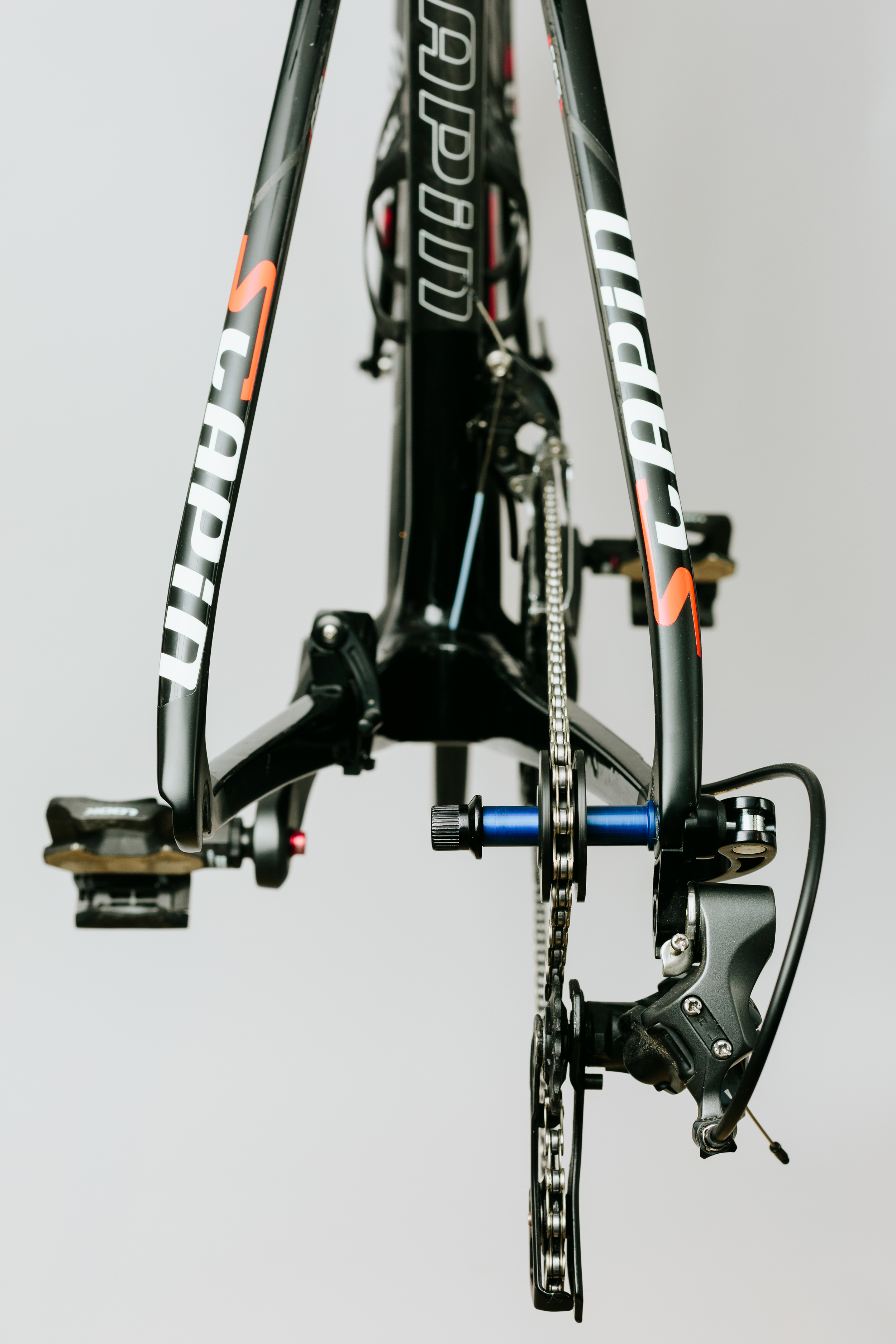Stuff: Park Tools Race Stand
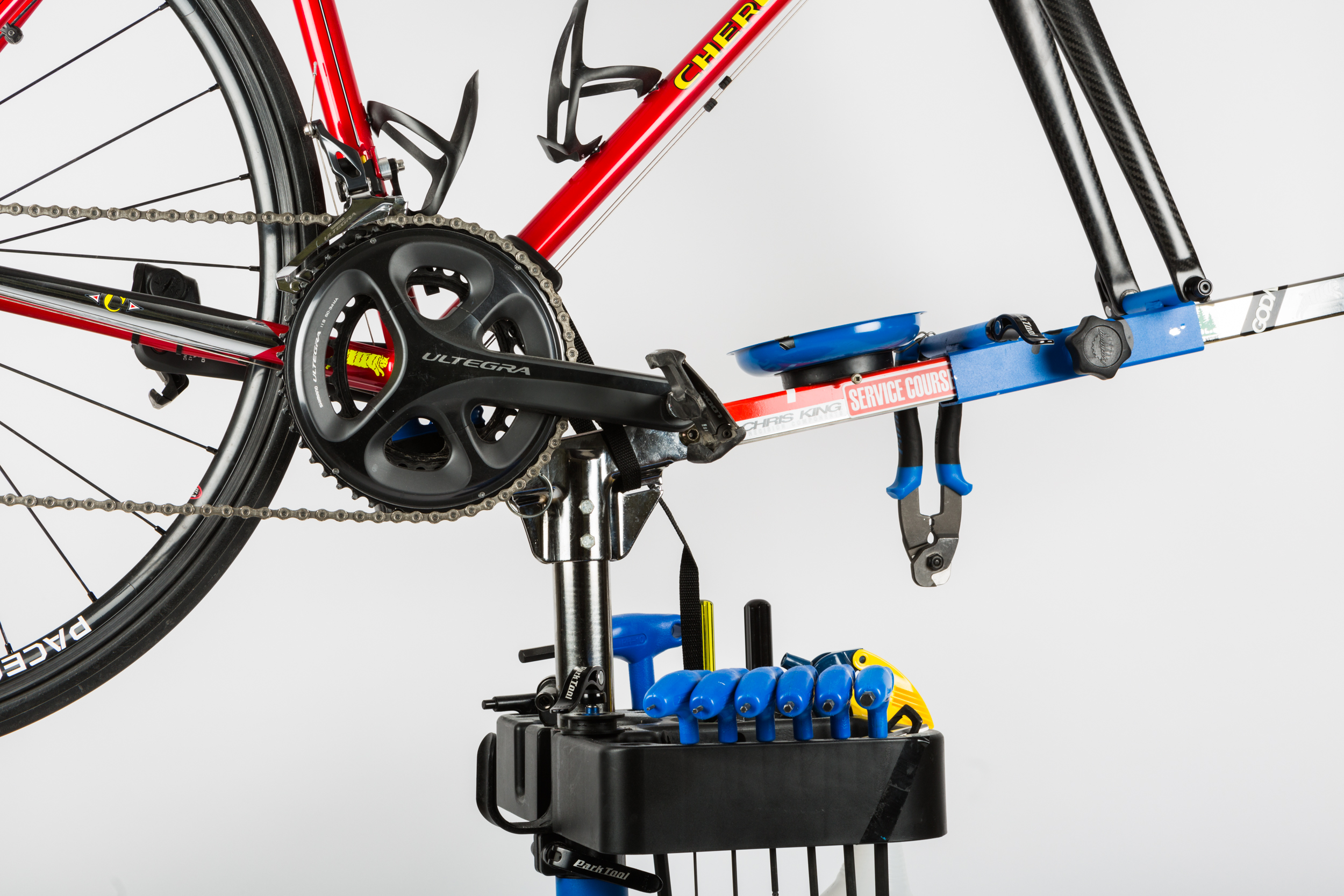
A good rule of thumb is, if you're going to ride a bike, you should at least be able to maintain that bike. As kids we used to just flip our BMX bikes upside down and wrench on them with the tools we borrowed from Dad's shed. This only slightly changed as we moved into road bikes in high school. A lot has changed since then, including how I treat my bikes. And now one of my favorite things is my bike stand.
Open admission, it hasn't always been this way. In the past I've cheaped out and used some sub-par repair stands. My thoughts were always that it's better than nothing. While yes it's true that any stand is better than flipping your bike over, working on it while it's secured in the trainer, or even while leaned up against the wall, the truth is that a good quality bike stand is worth its weight…. And weight matters!
Most people are familiar with the common upright repair stand. Almost everyone I know who works on their own bike has one. In fact you'll likely to see them in a lot of shops too. These are the stands that hold the bike off the ground by clamping down on either the seat post or on the seat tube. Do not clamp on your carbon top tube. Unless you hate your bike. While upright stands are cheap and pretty versatile, in my opinion, they are far inferior to a proper race stand when it comes to mech'ing on a road bike. This is a lesson I learned while watching Jesse build up my Mosaic. That's when I upgraded to the Park Tools PRS-20 Team Race Stand. (now replaced by the PRS-22)
Tip: Race stands are also referred to as Sprint or Euro-style Stands.
It didn't take long to see why a race stand is so much more superior to its taller relatives. First and foremost, securing your bike to the stand doesn't require you to clamp down on any delicate part of the frame. For me at least, the lower overall height means that the cockpit and saddle areas of the bike are easier to work on. And bottom bracket maintenance and chain cleaning are easily done from the comfort of a sitting position. If that's too low for you, the bottom bracket height can be adjusted up to just over 3' from the ground.
The rotating center column is really convenient when you're working all over the bike because you can swing the bike around rather than having to walk back and forth. And none of bike access is restricted by the center column like on an upright stand. All this plus the lower center of gravity and hefty 18lb weight makes for a much more stable platform to work from. If you don't think this matters, wait until the first time you turn around and bump your upright repair stand then scramble to catch your now descending carbon treasure. And a race stand is far less prone to resonance shaking from any imbalances in your wheels while working on your drive train.
Now I won't pretend that there are no downsides. Getting your bike ready to work on with a race stand takes a bit more effort that just lifting and clamping. You have to remove at least one of the wheels in order to secure the bike to the stand either via quick release to the fork or the rear dropouts. To adapt to bikes of all types and sizes the quick releases can be adjusted fore and aft along the square bar column. If you are working on disc brakes with larger rear axle widths you can adjust the rear release for either 130 or 135mm. Disc brakes can also be accommodated through an optional through axel adapter. Again, more complicated than an upright stand but not limiting.
You can, and should, then secure the whole thing to the stand with the included strap. Race stands are also heavier and bulkier than any of the upright stands, including the collapsible ones, but lets be honest, how often are you travelling with or moving your bike stand? But if you are travelling with it, the PRS-20 does collapse down to 33" for example. So while there are downsides, I don't think they outweigh the convenience or upsides. If you need more reassurance, look at what pro mechanics use on the tour. If it's good enough for them day in and day out, it's more than good enough for us.
Space for accessories is a bit more limited on race stands because of the much shorter center column. But I definitely recommend spending a few dollars and getting a tool tray. The convenience of having your tools immediately on hand can not be simply stated. It just makes everything so much less…. complicated. While I'm using the Park Tools stand, I prefer the Tool Tray from Feedback sports. It has a better, larger, more functional design. It took a bike of DIY to make it work with the PRS-20 because the center column fitting is larger on their stands. This meant I had to shim it down with a few pieces of blown inner tube that I cut into pieces. Now it fits snug and I can keep a full set of hex tools, socket wrench, screw drivers, spray bottle, or any loose bits I need. The other accessory to add is the Park Tools MB-1 magnetic parts bowl. Why? Because without it, you're going to find yourself constantly trying to find somewhere to put that spare bolt, cut cable end, cable barrel end. You definitely won't be cursing that missing washer. The magnetized bowl not only holds the metal bits safely in place, but it also snaps right to the repair stand. I keep mine in the space between the bottom bracket and the front fork.
If you're thinking about building your home workshop, up'ing your mechanic game, or even at least starting to learn, do it right and get a race stand. Trust me, it's worth the one time investment to do it right. The newer PRS-22 Team Issue Repair Stand drops the weight by 6lbs, adds another 6" of height adjustment, and the main cross beam is adjustable to provide even better stability. I kind of want the updated version but since the PRS-20 was clearly built to last a lifetime, it's gonna take a complete disaster before I have to upgrade my workshop game.
